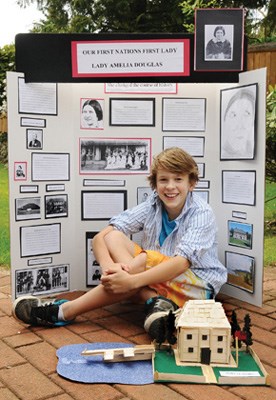There was a brief stretch of time, a moment in history, when architects could have influenced the appearance of urban and suburban communities throughout the West.
It was after the Second World War, veterans were returning home and the baby boom was well underway. Housing was in demand.
From Los Angeles to West Vancouver, a regional adaptation of the modern design style known as International Style had already taken root in forests and on hills and cliffs along the coast. A handful of local architects and designers -- including B.C. Binning, Robert Berwick, Ned Pratt, Ron Thom, Fred Hollingsworth and Arthur Erickson -- were designing stripped-down, elemental structures full of space and light.
The West Coast style didn't catch on with the masses though, says writer James Steele, speaking in the new documentary film Coast Modern, which will premiere at a sold-out screening during Vancouver's DOXA Documentary Film Festival on May 8.
Instead, the clamour for housing was met by cookie-cutter developer homes; most of them not examples of good design, but of design for the masses.
"We float the idea that Modernism was a beautiful failure," says Gavin Froome, codirector of the film. "Simplicity is a hard sell."
The seed for the documentary was planted after Froome met architect Dion Neutra while exploring modern architecture in L.A. Now, almost five years later, and after scrapping their first effort, he and co-director Mike Bernard are proud of the film they put together, one that isn't just for architecture buffs.
"It's a story about place and life, and what we're doing on the planet," explains Froome.
Not bound by the formal parameters of traditional architecture, the West Coast style does have some distinctive hallmarks.
Like other modern styles, the form is concerned with the volume of space that the building houses, rather than the mass of its walls.
Layout is driven by purpose
rather than tradition, leading to the use of complex geometric forms and open-plan spaces.
Natural Light and a connection to the outdoors are key; and in West Vancouver especially, the design works with the environment, rather than against it. Building sites were often rocky and irregular, with spectacular views of the ocean or native forests.
The real gist of the West Coast style, says Froome, is to bring the occupants in touch with each other and in touch with nature.
"The people who say 'I can't have a flat roof, they leak' are missing the point. The sound of rain falling on the roof or the way light shifts throughout the course of a day provide moments where you notice nature in a way you never did before.
"Why move to the West Coast if you're just going to live in a monster house full of rooms and TVs?"
The problem now, says Froome, is that over the past three decades, a house has come to be nothing more than an asset or an investment, rather than a home.
Considered dated or too small, many of the North Shore's West Coast Modern residences are gone now or irrevocably altered.
"They were designed to house a life, not to make a profit or sell in three years. We've ended up with this disposable culture around architecture . . . So many have been lost or butchered."
Coast Modern surveys the legacy of beautiful and inspired dwellings still standing, including several homes in West Vancouver, and explores the past and present influences of modernist design on architecture.
Although the premiere is sold out, Froome said plans are underway to screen it again locally. Find out more at coastmodernfilm.com.



